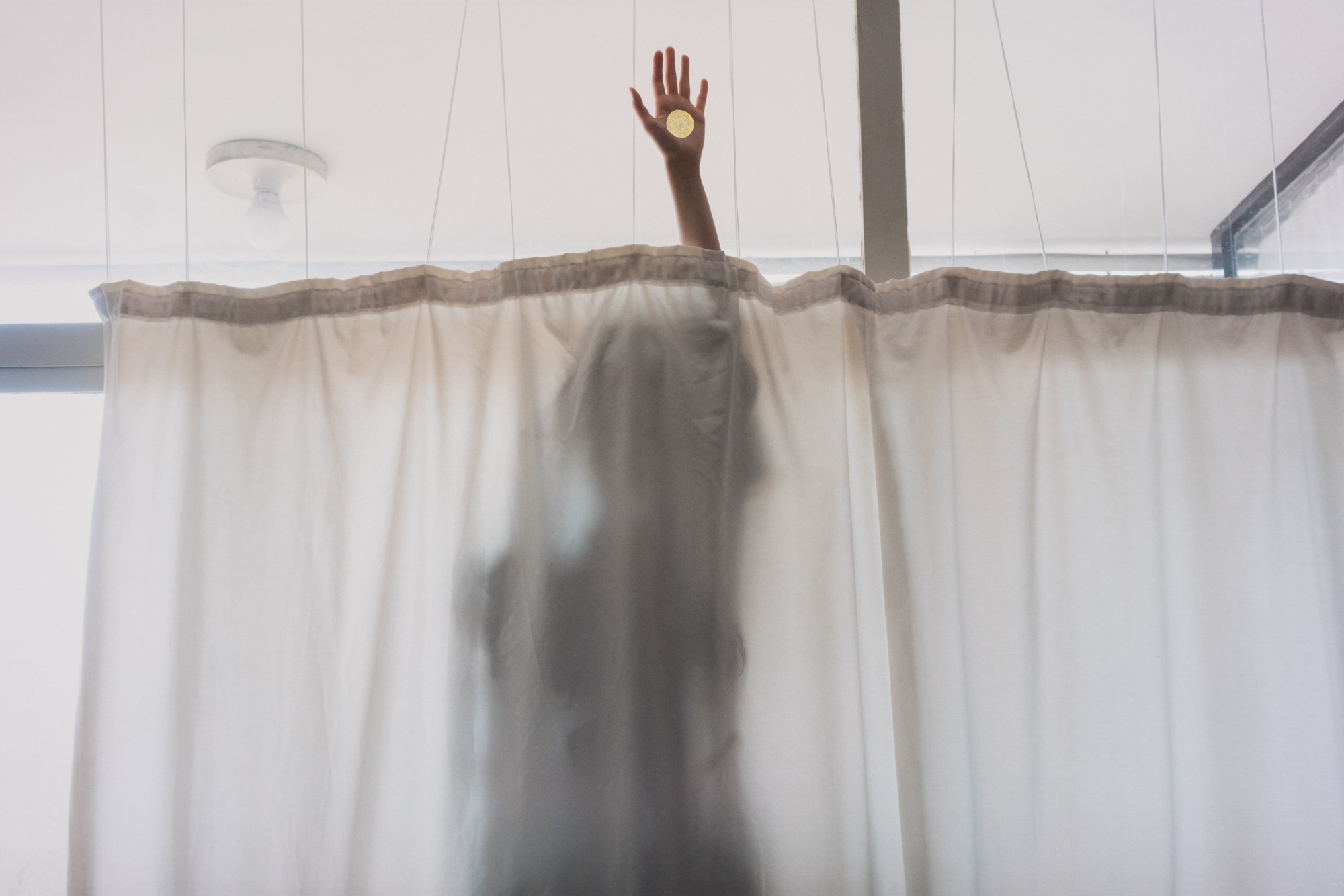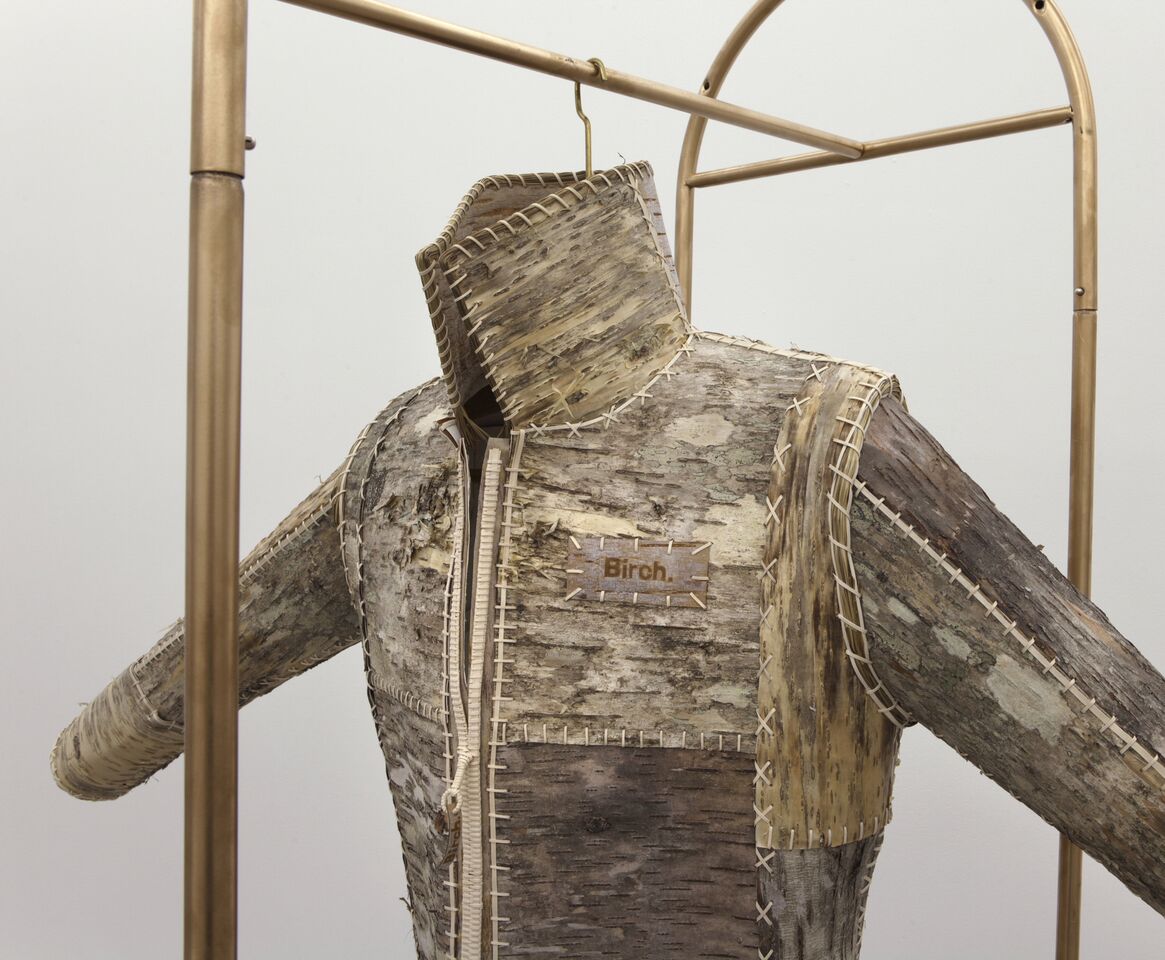Babak Kazemi — Behnam Bakthtiar Award
The first Behnam Bakhtiar Award - FUTURE. IRAN — given out by the Monaco-based foundation to an Iranian artist — was awarded to artist Babak Kazemi. (b. 1983)
The biennial prize aims to “counteract the image of a culture and country that is too often misunderstood and criticized” according to Sassan Behnam Bakhtiar, the Monaco-based Iranian artist who founded the prize. Babak Kazemi, who is represented by Silk Road Gallery, is a self-taught photographer who has — among others things — taken up an artist residency at the London-based Delfina Foundation. His work focuses on oil production in Khuzestan, the Iranian province where he grew up. Kazemi will receive €10,000 and will have a solo show at Benham Bakhtiar foundation, which will also acquire two of his works. Two young Iranian artists received two special mentions: Parham Peyvandi (b. 1989) and Morvarid K (b. 1982).

Morvarid K, Cold Lace 2017 — ink on photograph
The 2017 Sobey Art Award goes to Ursula Johnson
The 2017 Sobey Art Award went to artist Ursula Johnson, who was presented with the prize during a ceremony held on October 25 at the Art Museum at the University Toronto.
For the first time in its history, the 2017 edition of Canada’s most prestigious prize for artists under 40 was largely dominated by women, with only one man appearing in the shortlist. In addition, two indigenous artists — Johnson herself and Raymond Boisjoly. Other finalists included: Jacynthe Carrier (Québec), Bridget Moser (Ontario) and Divya Mehra. (Manitoba; India; New York)
Through performance and installation, Ursula Johnson's work "engages with strategies of duration and display to interrogate outdated ethnographic and anthropological approaches to understanding Indigenous cultural practices." She was saluted by the jury “for her strong voice, her generosity and collaborative spirit. Through her work, she redefines traditional materials and re-imagines colonized histories.”
This year, the Sobey Art Award’s cash prize was doubled; the $110,000 prize money — significantly larger than most prizes — will be split as follows: Ursula Johnson will receive $50,000, while fellow finalists will receive $10,000. Longlisted artists will also benefit from a $1,000 prize.

Ursula Johnson, Ode to Miss Chief Eagle Testickle, 2016, yellow and grey birch bark, 140 lb acid-free watercolour paper, pH neutral adhesive, black ash ribbon, sweetgrass, maple wood, gold spray-painted metal garment rack on casters, antique wooden garment hanger with brass hook, 198 × 122 × 162.5 cm, Photo: Karen Asher
Dana Lixenberg awarded the Deutsche Börse Photography Foundation Prize
The Dutch photographer was awarded the £30,000 prize for her project Imperial Courts, which she worked on between 1993 and 2015, capturing the lives of the community of the Imperial Courts housing project in Watts, Los Angeles. Brett Rogers, director of the Photographers’ Gallery, and non-voting president of the 2017 jury, has commented, saying that Lixenberg’s work represents an “affirmation of photography’s power to address important ideas through pure image.”
Lixenberg follows in the footsteps of several of the most internationally renowned photographers, including Trevor Paglen (2016), Mikhael Subotzky (2015), Richard Mosse (2014) as well as Juergen Teller, (2003) and Andreas Gursky (1998).
Born in the Netherlands in 1964, Lixenberg travelled to Los Angeles for the first time in 1992 for a magazine story covering the LA riots. What she saw inspired her to revisit the area, and led her to encounter the people of the Imperial Courts housing project, whom she photographed over the course of twenty-two years, creating an evocative record of the lives of an underrepresented community. Over the years, Imperial Courts has gone from being the epicenter of race riots to an anonymous deprived neighbourhood,” said Lixenberg and Eefje Blankevoort, who co-directed the documentary inspired by Lixenberg’s photographic work. “The media attention has died down, but the lives of the residents go on.”

J 50, 2008 © Dana Lixenberg. Courtesy of the artist and Grimm, Amsterdam
Shirin Yousefi wins the 2017 KADIST — Kunsthalle Zürich Production Award
Iranian artist Shirin Yousefi is the recipient of the 2017 KADIST — Kunsthalle Zürich Production Award, aimed at enabling young artists based in Switzerland to realize new projects within the institutional context.
Awarded by the non-profit art organization KADIST (Paris, San Francisco) and the contemporary art institution Kunsthalle Zürichsince 2012, the €10,000 prize will go towards the production of Yousefi’s The Tales of the Cortex, an artwork engaging with the very current issues surrounding the idea of “borders” and geopolitical spaces. The work will be presented as part of the group exhibition “Speak, Lokal,” set to open on March 4 and running until May 7, 2017 at Kunsthall Zürich.
The artist — who was born in Teheran in 1986 but is a graduate of The École cantonale d'art of Lausanne — was chosen unanimously as the 2017 laureate for her “intrepid approach to artistic research and production.” Yousefi was chosen from a shortlist comprising the duo Marc Asekhame and Teo Schifferli as well as artists Maya Minder and Gian-Andri Töndury. The 2017 jury was made up of Emilie Villez, director of KADIST (Paris), Daniel Baumann, director of Kunsthalle Zürich, artist Bea Schlingenhoff, Fredi Fischli and Niels Olsen, co-directors of exhibitions at the Institute for the History and Theory of Architecture at ETH Zürich and professor Daniel Morgenthaler of Helmhaus Zürich.
Previous recipients include artists Kaspar Müller, Flavio Merlo and Ben Rosenthal.

Shirin Yousefi — courtesy KADIST
Swiss photographer Matthias Bruggmann wins Prix Elysée
The Musée de l’Eysée named Matthias Bruggmann (b. 1978) as the winner of the 2017 edition of its prize. Selected from among eight nominees, Bruggmann was chosen for his project entitled A haunted world where it never shows. Bruggmann received a sum of CHF 80,000 to continue his proposed photographic project documenting the conflict in Syria, and an accompanying book will be published in 2018.
Bruggmann has previously worked on projects in Egypt, Haiti, Iraq, Somalia, Syria and Libya. He was part of the curatorial team for We Are All Photographers Now! for the Musée de l’Elysée, and is one of the co-founders of the contemporary art space Standard/Deluxe in Lausanne. On the winning project, Bruggmann revealed,“At its core, it is an attempt at generating a sense of moral ambiguity.The design of this is to make viewers uneasy by challenging their own moral assumptions and, thus, attempt to bring, to Western viewers, a visceral comprehension of the intangible violence that underlies conflict.”

© Matthias Bruggmann — Prix Élysées
Chinese artist Li Ming wins the Hugo Boss Asia Art Award
Chinese artist Li Ming (b. 1986) was the recipient of the 2017 Hugo Boss Asia Art Award, the biennial prize recognizing the work of emerging contemporary artists in the early stages of their career. Li Ming succeeds Kwan Sheung Chi and Maria Taniguchi, who were awarded the prize in 2013 and 2015, respectively.
Born in Yuanjiang, Li Ming currently resides in Hangzhou. His practice focuses on videos and video installations such as his latest project Rendering the Mind, which was shot at Shanghai’s five-star hotel Broadway Mansion. Intertwining the public and the private — as in other projects by the artist, notably New Directions, presented in 2016 at the Ullens Center for Contemporary Art — Rendering the Mind actively engages with the exhibition space itself, linking it with scenes in his previous video productions, augmenting the scenes of the film.
Larys Frogier, director of Shanghai’s Rockbund Art Museum — which organizes the prize in collaboration with Hugo Boss — has said of Li Ming’s oeuvre that it “constitutes one of the most meaningful and advanced contemporary visual creations and brilliantly combine performance, video and sound.”
Li Ming has shown internationally at institutions such as the K11 Art Foundation, MoMA PS1, the Ullens Center for Contemporary Art and the Centre d'Art Contemporain Yverdon-les-Bains among others.
An exhibition of existing and newly commissioned works by Li Ming — including Rendering the Mind — and fellow shortlisted artists Tao Hui, (China)Yu Ji (China) and Robert Zhao Renhui (Singapore) opened at the Rockbund Art Museum on October 27 and is visible through February 11, 2018.

Li Ming, installation view of Hugo Boss Asia Art 2017 © courtesy of the Artist and Rockbund Art Museum









